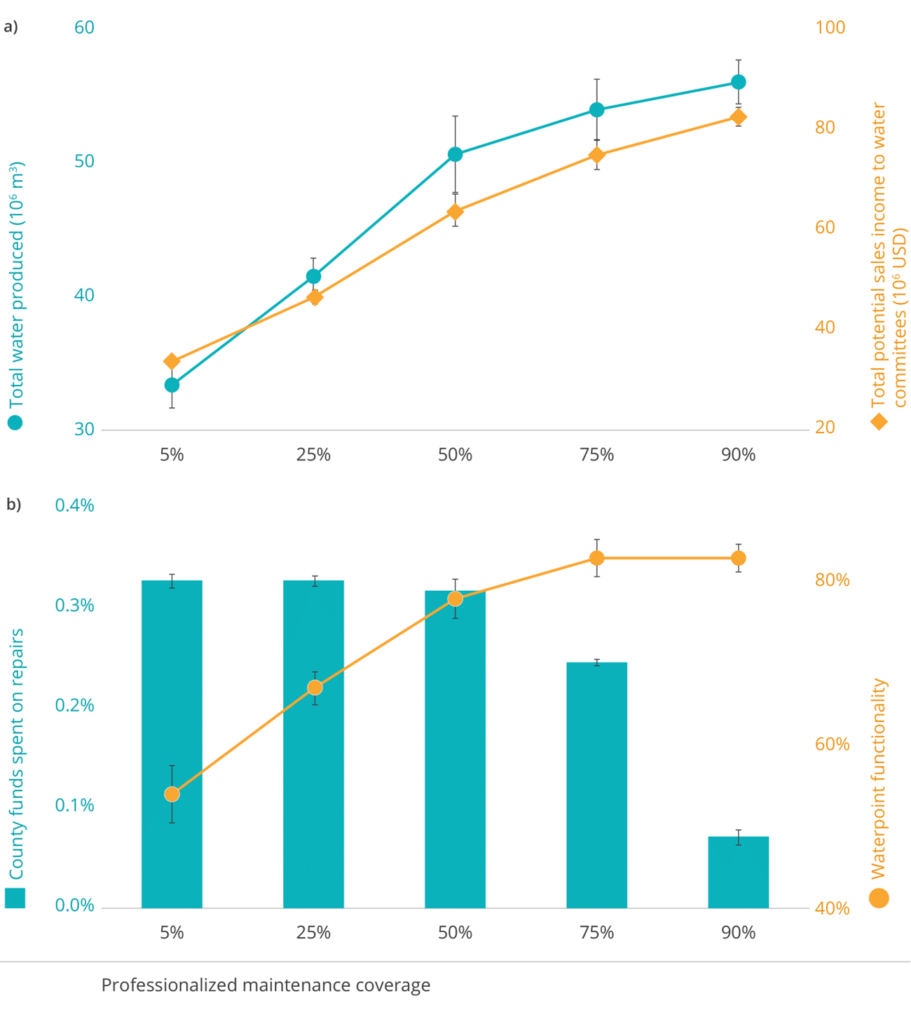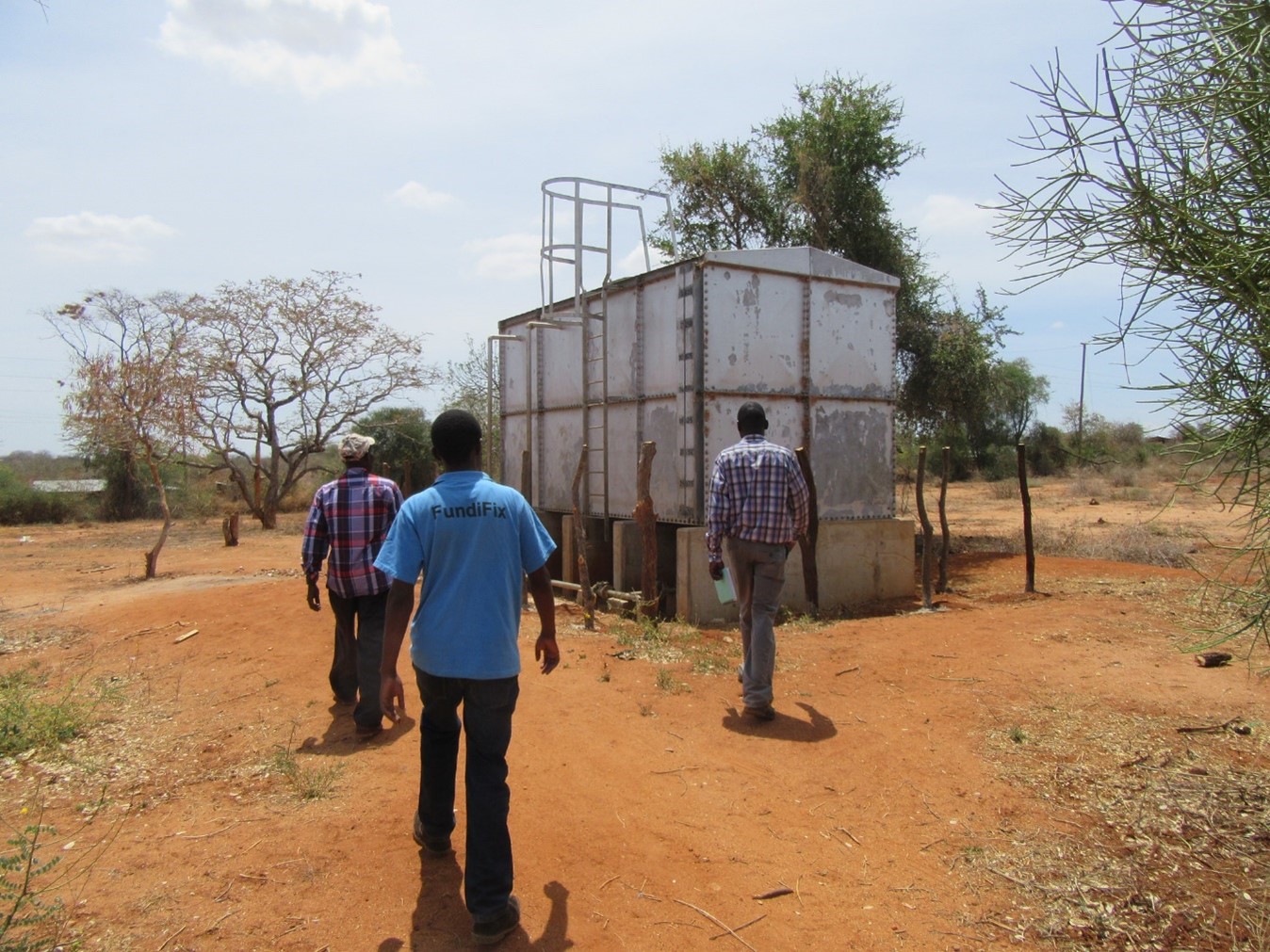Pranav Chintalapati, University of British Columbia
Over the past decade, new approaches for rural water maintenance service provision have emerged, disrupting the status quo of community-based management and government intervention. FundiFix is one of a new cohort of professional maintenance companies and has been incubated through Oxford research since 2012 in Kenya.
The emergence of professionalized maintenance approaches has prompted questions on their effectiveness in terms of water point functionality outcomes and financial sustainability. To explore these questions, a system dynamics modelling study was conducted to investigate the financial and functionality effects of implementing and scaling the professionalized maintenance service FundiFix on piped schemes in Kitui County, Kenya. The work was supported by the USAID SWS programme and the REACH programme.
Key findings from the study include:
- Professionalized maintenance services may increase functionality rates from 54% to over 83%,
- Higher functionality leads to a 67% increase in water production,
- Government expenditure on major repairs falls by over 60%, and
- Rural water users benefit from fewer breakdowns contributing to wider development goals.
The system dynamics model was calibrated and tested using 42 months (July 2017 to December 2020) of metered volumetric flow readings from 924 observations of 24 different piped schemes served by FundiFix. Simulations were run for 10-year periods to observe predicted functionality rates of schemes served by FundiFix and those under the status quo.
Model-predicted functionality rates revealed that schemes served by FundiFix achieved and maintained over 80% functionality throughout the simulation, while schemes under the status quo leveled-off around 50%. The difference is explained by two reinforcing feedback loops. Preventive maintenance reduces wear and tear and thereby the frequency and severity of breakdowns, leading to more working schemes; and simultaneously, the guaranteed-service model incentivizes rapid repairs in the order of days rather than months. More workings schemes enable more pump use, and the per volume fee structure ensures that more working schemes provide more income to the maintenance service. Although FundiFix is able to maintain high functionality rates over the 10-year simulation, the overall county-wide impact is relatively low because FundiFix only serves ~5% of schemes.
To test the county-wide effects of scaling up FundiFix coverage, simulations were run for 10-year periods at coverage levels of 5% (current), 25%, 50%, 75% and 90%. The model results showed that increased coverage levels led to higher functionality rates throughout the county, with peak functionality achieved at the 75% coverage level, at which point the allocated government funds are able to adequately support the remaining 25% of schemes. A consequence of increased functionality was that over a 10-year period the total volume of water produced also increased, growing by 67% between current (5%) and 90% coverage levels. Using the average community tariff of $0.03 USD/20 litre jerry can (2021), the increased volume of water indicates potential growth in income to community water committees, amounting to approximately $48M USD in added revenue at the community level over a 10-year period at 90% coverage.

The model results also suggest that increased FundiFix coverage reduces major repair spending by the county government. The cost to operate at 90% coverage and maintain over 80% functionality is roughly $0.20 USD/person served/month. Income from service fees in this time period cover 8% of these costs, requiring 92% external subsidy.
The study findings show that professionalized maintenance can improve service levels, and the results demonstrate the potential benefits from scaling up. External subsidies will be needed to achieve these outcomes, and reallocating government budgets and stronger coordination with donor and NGO projects could help close the funding gap.
For more details on the study, please see Improving the Reliability of Water Service Delivery in Rural Kenya through Professionalized Maintenance: A System Dynamics Perspective.

